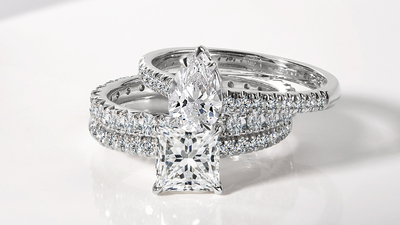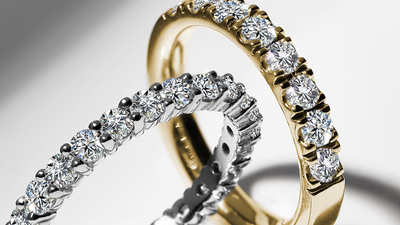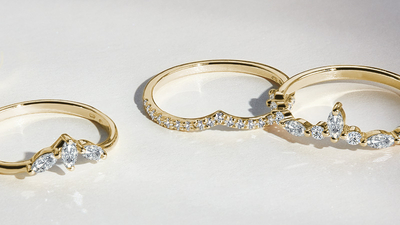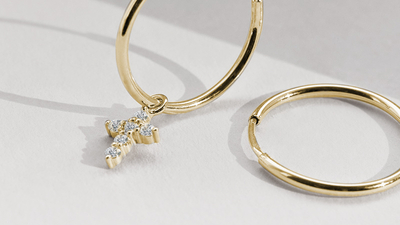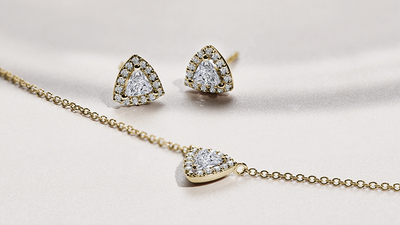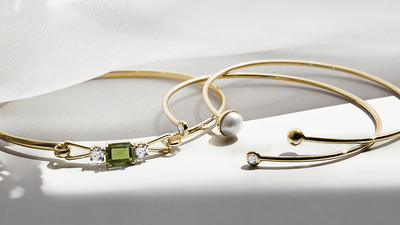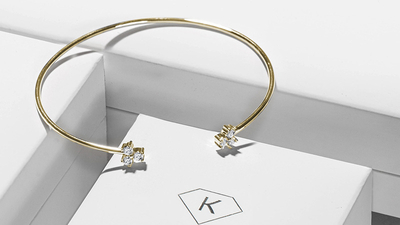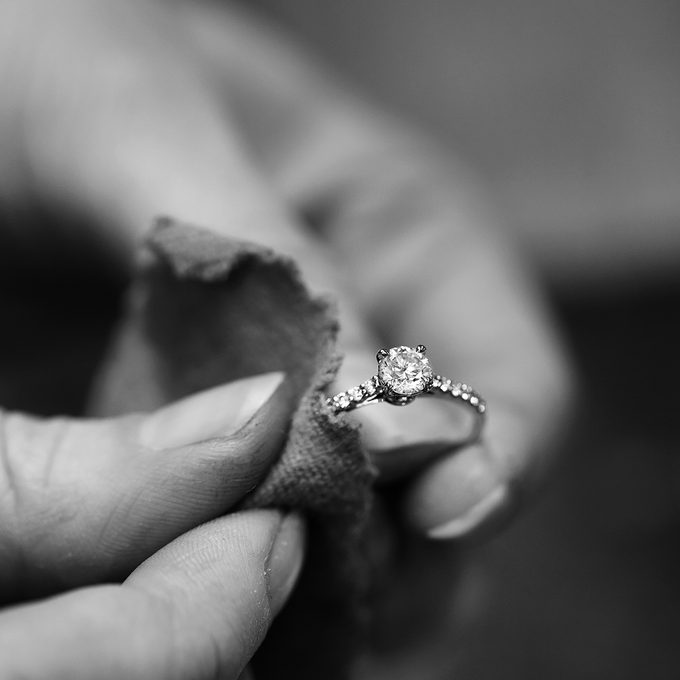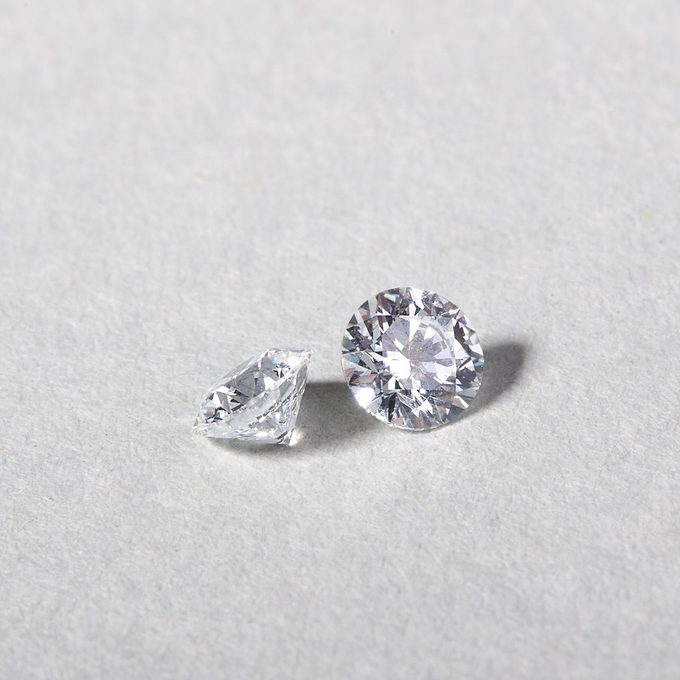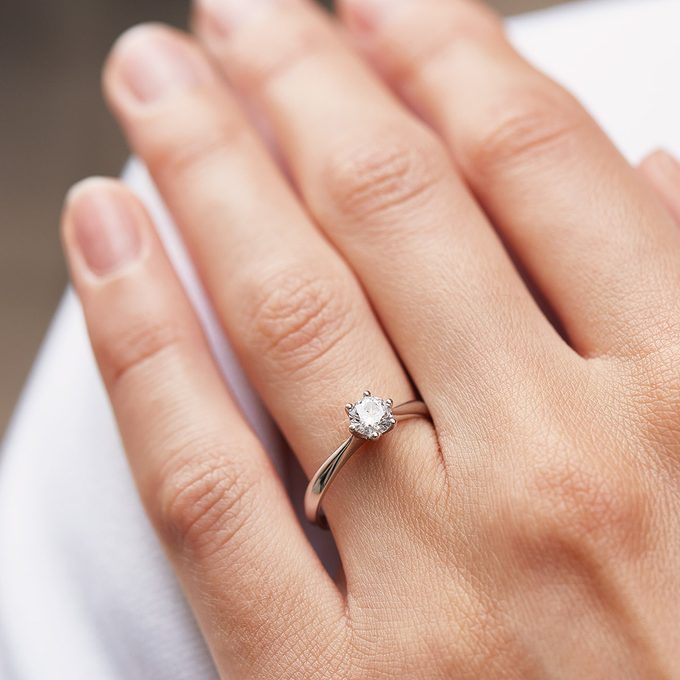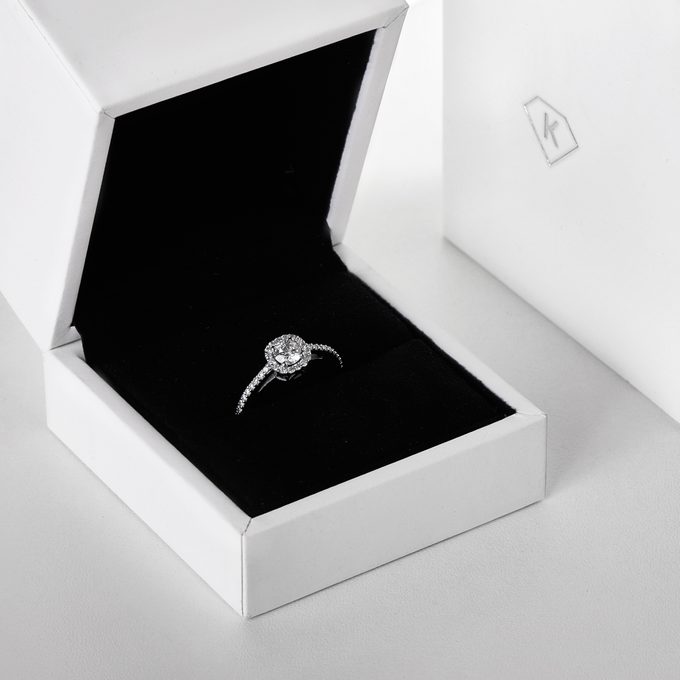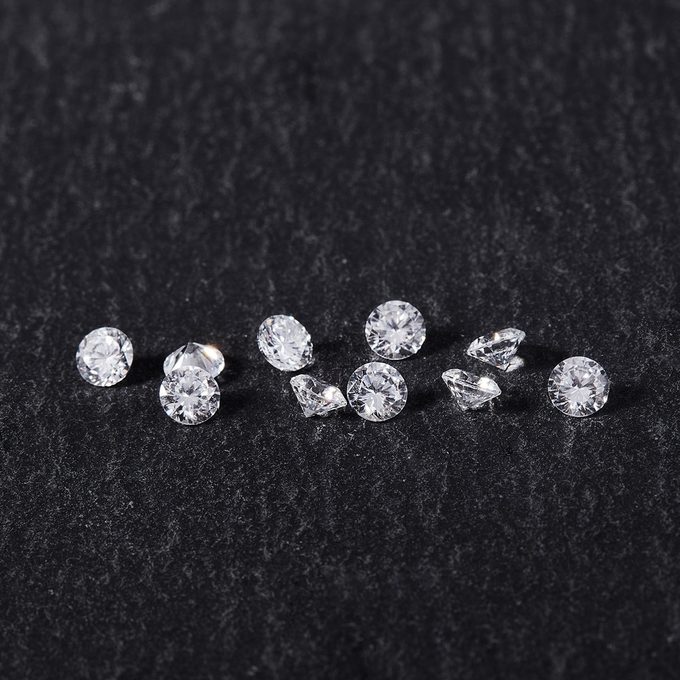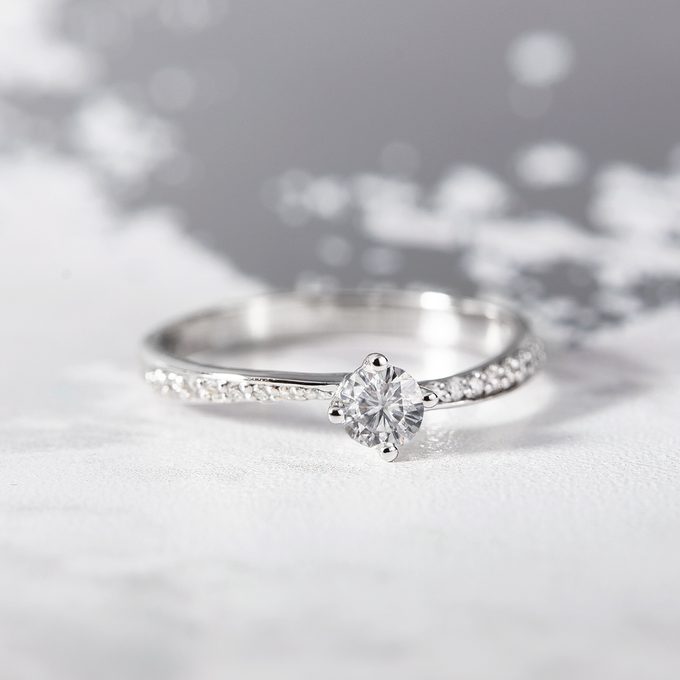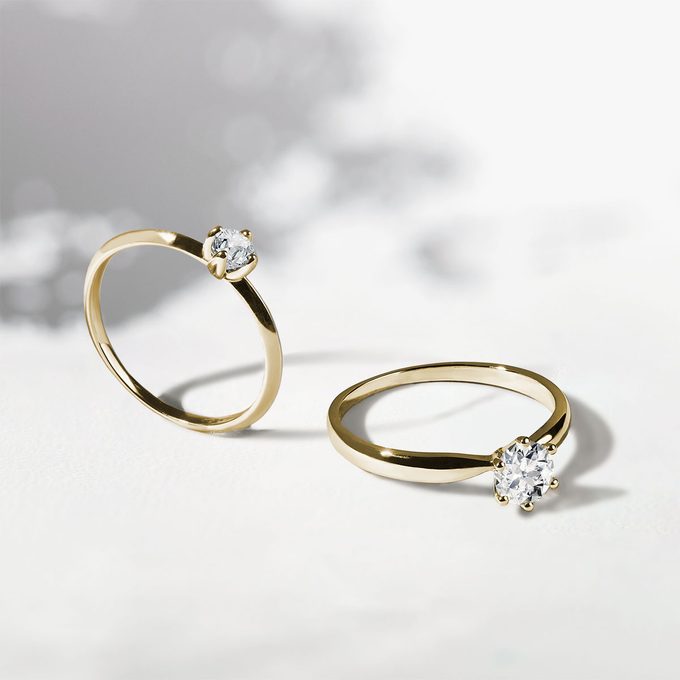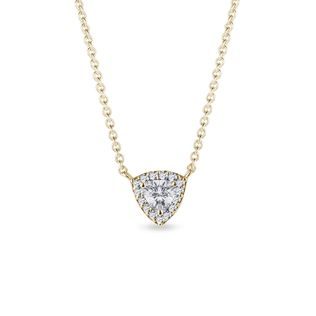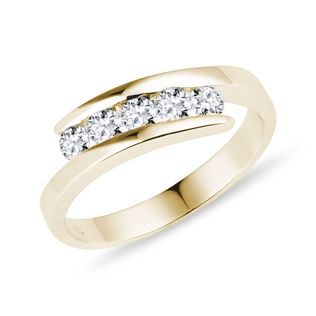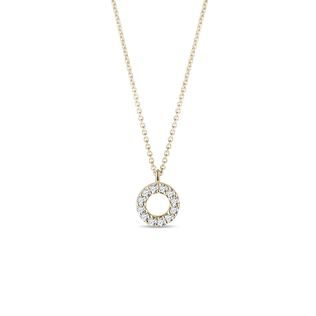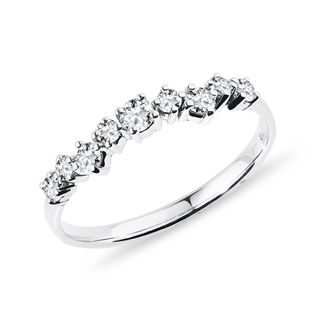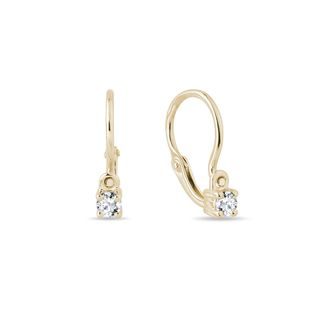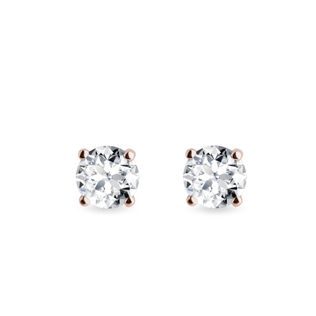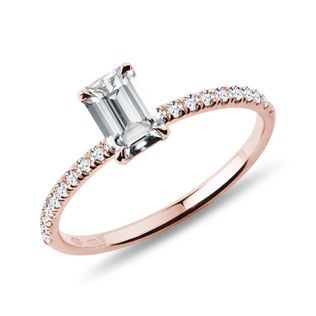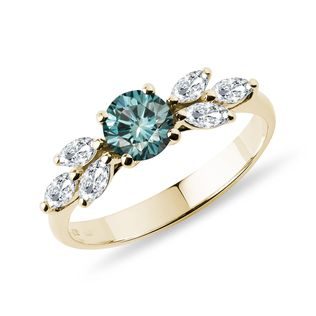There are many labels attached to diamonds. We can call them eternal, valuable, beautiful, rare... But where did they come from? How are they mined? And how do they make their way into KLENOTA jewellery? Find out in this article.
How were diamonds formed?
Diamonds are a form of carbon, just like the ordinary graphite found in a pencil. What sets diamonds apart is found in their atoms and bonds since the bonds in diamonds are stronger than those in graphite. They also have differently arranged atoms in their crystal lattice. Diamonds are at the top of the Mohs scale of hardness but they are relatively brittle due to their perfect cleavage. The theory is that diamonds formed at great depths in the Earth's upper mantle under pressure and at high temperatures of around 1650-2370 °C. The rock which diamonds are found today was also formed in the same conditions. These rocks are known as ultrabasic igneous rocks such as kimberlites or lamproites. Diamonds are found in all colours and their colour is created by another added element or perhaps by radiation and deformation of the crystal lattice.
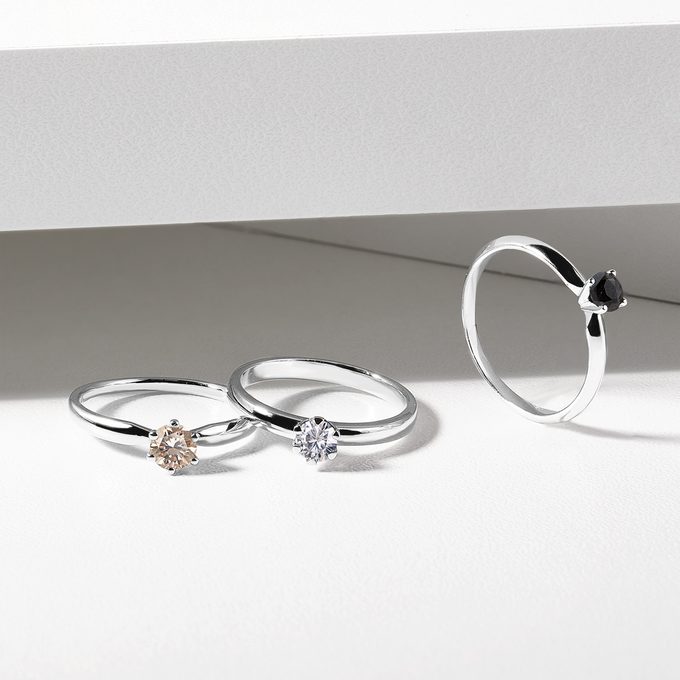
The journey of diamonds
In the past, diamonds were not mined underground but in alluviums. This is also where all historic diamonds come from. The cradle of the world's diamonds is in India and this is where the first records of diamonds including the first discovered deposits also come from. The earliest document which mentions the diamond trade is an Indian tax book in Sanskrit from the 4th century BCE. At that time, diamonds were extracted from the river alluviums in the Golconda region. These local acquired sparkling minerals very soon also took on a mystical reputation and became associated with love.
Other references to diamonds date back to the period after the birth of Christ, specifically to the year 16 and come from the surviving texts of the Roman poet and astrologer Marcus Manilius. There are also references from the year 100 in the texts of Pliny the Younger. Diamonds apparently made their way to Europe with Alexander the Great, but some sources have confirmed that Europeans had seen diamonds as early as the 6th century BCE because this is the date of a bronze statue from ancient Greece which has two rough diamonds set into its eyes. The flow of diamonds between Asia and Europe was aided by the Silk Road, which saw the popularity of diamonds soar.
The origins of diamond cutting and polishing in Europe can be traced back to 14th century Venice which was considered the diamond capital of Europe. The art of diamond cutting soon spread further afield to Paris, Bruges, Antwerp and Nuremberg, where the first guild of diamond cutters and polishers was founded in 1375.
Diamonds were particularly popular in the Renaissance. In the second half of the 14th century, the cleavage planes of diamonds were discovered, which profoundly affected the work of diamond cutters. The stones were split into smaller pieces using a chisel which made the work faster. However the chisel had to be positioned in the correct place. If it wasn’t, the precious stone would break and deteriorate.
At the end of the 14th century, the world capital of diamonds moved to Antwerp. In 1475, another groundbreaking discovery was made here that started the trend of symmetry in diamond polishing. It was the Belgian cutter Lodewyk van Bercken who introduced the concept of absolute symmetry in the placement of individual facets on a cut stone. He did this with the help of a tool called a scaif (which he invented), which worked on the principle of a rotating wheel which was impregnated with olive oil and diamond dust. With this device, it was possible to polish away every undesirable element on the surface of the diamond. At the end of the 15th century, the range of diamond shapes was expanded to include table cuts - squares, rhombus cuts and rectangles.
At the beginning of the 16th century, the rose cut appeared and enjoyed popularity for over 100 years. In the 17th century, it was common to cut diamonds into marquise, pear or oval shapes. However the truly revolutionary idea came from the Venetian cutter Vincent Peruzzi, who cut the diamond he was entrusted with into a table with 32 faces at the top and 24 faces with a cut tip at the bottom. This is how the diamond cut known as the brilliant cut - the most important type of cut today - was created. This cut is the best one at bringing out the optical qualities of diamonds.
The first cushion cuts (squares and rectangles with rounded corners) appeared in the 18th century. Until the end of the 18th century, all diamonds came from India but deposits there were becoming scarce. In the second half of that century a new source in the form of Brazil appeared on the scene. Although India slowly mined out all of its deposits, it nonetheless gave the world several famous diamonds - the Blue Hope, the Koh-i-Noor, the Orlov and Great Mogul among others.
The beginnings of mining
One type of diamond-bearing rock is the already mentioned kimberlite. Most of this rock was formed 70-150 million years ago but kimberlites dating back 1.2 billion years also exist. However the percentage of diamonds found in kimberlites is low - of all the kimberlites in the world, only 15% are diamond-bearing and of these, only 6% are mineable. As a rock, kimberlite is linked to volcanic activity - it is an intrusive rock which solidified beneath the Earth's surface and this was critical to the formation of large diamonds and other crystals in it. Because the rock solidified slowly, the minerals had time to crystallise and grow into nice, confined grains and crystals.
Kimberlites are found in southern parts of Africa, a region which was volcanically active in the past. Even the name kimberlite comes from South Africa, specifically the mining town of Kimberley, where the diamond rush started at the end of the 19th century. In 1866, a farmer called Schalk van Niekerk noticed a boy from the neighbourhood playing with an interesting looking stone that sparkled. He didn't hesitate and asked the boy if he could buy the stone. The boy's mother refused to accept money for a piece of ordinary stone and gave him the mineral. The stone then passed through several owners until it was found to be a 21 carat diamond. It was named Eureka and is on display at the Kimberley Museum.

The Kimberley is also home to the Big Hole, one of the first mines to produce diamonds which operated from 1871 to 1914. The name Big Hole is very apt since diamond mining requires the removal of huge amounts of rock, leaving gigantic pits. The Big Hole is 1,750 yards in circumference and prospectors have excavated this mine by hand to a depth of 788 feet. Two famous diamonds - the 153.5 carat Porter Rhodes and the 287.4 carat Tiffany diamond also came from this deposit.
Several metric tons of rock have to be mined to extract the diamonds. The average amount of diamonds in kimberlites is 1-2 ct per ton of rock mined. This is why diamond mines reach enormous proportions. However only 20% of the diamonds mined are suitable for jewellery making. No wonder then that diamonds are so rare and valuable. Diamond-bearing rock is mined by blasting, breaking or digging. The material which has been mined is then sprinkled with water and left to the elements. This upsets the rock structure and the mineral grains release themselves.
Conflict Diamonds
Conflict diamonds (also known as blood diamonds), were designated by the UN in 1990 as diamonds which originate from areas controlled by anti-government armed forces that use the proceeds of mining to finance armed conflict and terrorism. At the time, this was a global problem involving diamond mining and sales from Angola, Sierra Leone, Liberia, the Ivory Coast, the Democratic Republic of the Congo, the Republic of the Congo and other unstable countries. Diamonds obtained in this manner have also been shown to have financed the September 11 terrorist attack and other Al-Qaeda activities. The money from them has also flowed to other organisations such as Hezbollah.
This global problem started to be addressed in 2000 when the UN recognized the link between African diamonds and terrorism and thus began to regulate the trade in diamonds which came from conflict zones. In 2003, the Kimberley Process Certification Scheme (KPCS) which is used worldwide was applied for the first time. This scheme involves an international collective of 74 countries that issued a set of measures aimed at preventing the trade in blood diamonds. Any country profiting from diamond mining must therefore prove that the mining, sale and export of diamonds was carried out in a completely legitimate way.
Diamond mining today
At the moment, one of the top diamond producers is Botswana, accounting for 15.3% of all diamonds mined. A large proportion of these are high quality diamonds. There are two major mines in Botswana - Jwaneng and Orapa. The former produced 34.3 million carats of rough diamonds in 2006, accounted for about a quarter of the world's production of diamond for jewellery and is the second most productive mine today.
South Africa is another major diamond producer and was the birthplace of diamond mining thanks to the Big Hole mine. This mine is now flooded and serves as a tourist attraction unlike the active Cullinan mine, which is the world's most important deposit of blue diamonds. From time to time it produces record-breaking pieces of deep blue stones such as the 1905 Cullinan which weighed 3,106 ct in its rough form and pieces of which adorn the English Crown Jewels as cut stones.
Russia supplies 22.6% of the diamonds on the market. Diamonds are mined for instance in Yakutia in the Siberian town of Mirny. The sight of this town with the hole from the mine on the edge of the city is fascinating - the mine is three quarters of a mile across in length and at the moment it is over 1720 feet deep. It has been operating since 1955. Another important mine is Udachny, which is also in Siberia and which is the fourth most productive mine in the world.
Australia also has a diamond mine called the Argyle mine. Unlike many other mines, diamonds there are mined from lamproites. The concentration of diamonds in lamproites is several times higher than in kimberlites - about 7 ct per metric ton of rock mined. The mine has produced over 800 million carats of diamonds, but was closed at the end of 2020 due to mineral resource depletion. The mine was significant mainly because it was the most productive one in the world and contained rare fancy colours - blue, champagne, pink, red and purple.
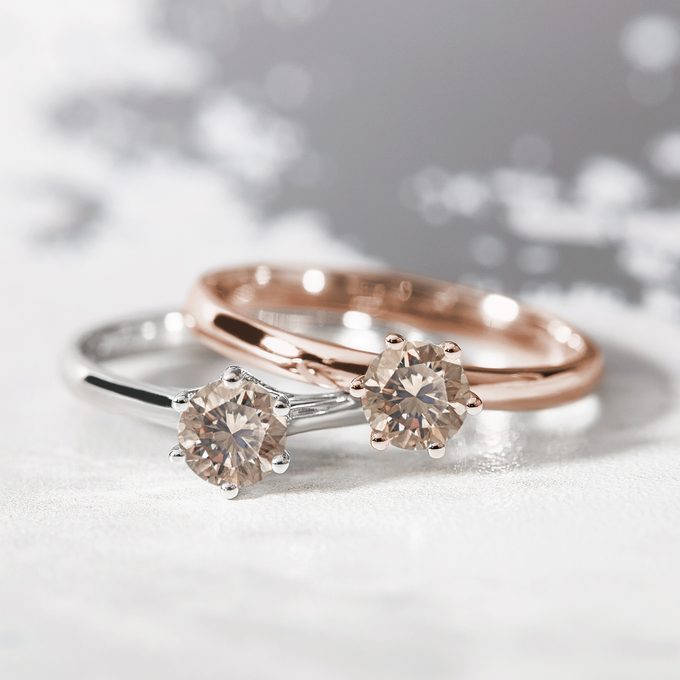
In Canada, there are two diamond mines. The first is called Diavik, it opened in 2003 and has so far produced 50 million carats of diamonds. The second mine is Ekati which opened in 1998. Its current annual production is 4 million carats of diamonds and 4 million ounces of silver. Both mines are expected to run out of mineral resources and be closed in the coming years.
Compared to these others, Namibia is different in terms of its mining practices. Its diamond resources come from sediments along its coastline. Mining there is difficult because several feet of sediment without any gemstones must first be removed. Sources say that 1.5 billion carats are mined here each year.
Diamonds as an investment
It’s no wonder that diamonds are even traded on an exchange since they are one of the most stable commodities you can invest in. Over the past 100 years, there have only been two fluctuations in their value, the first between 1978 and 1981 and then in 2010. In addition to diamonds, investing in gold is also recommended since its price is stable and increases over time. So in terms of an investment, an ideal choice is gold jewellery with diamonds.
However the value of diamond jewellery is not just financial. It is jewellery that is handed down from generation to generation and which holds the memories and legacy of our ancestors. Diamonds symbolise the deepest love. They are stable and very durable. Diamonds, in short, are eternal. What diamond jewellery do you dream of?
DIAMONDS in KLENOTA jewellery
At the KLENOTA jewellery studio, we purchase polished fair trade diamonds from suppliers who buy them direct from the Antwerp Diamond Exchange. The origin of the diamonds sold there is checked on the basis of the Kimberley Process Certification Scheme, which prevents trade in problematic diamonds. In view of the fact that the diamond exchange is the central point for diamonds from many locations around the world, it is not always possible to pinpoint the exact location of where a diamond came from. Such information is however available for larger diamonds (generally over 3.00 ct). At KLENOTA, we give an international Certificate of Authenticity issued by the GIA, HRD or IGI laboratories for all diamond jewellery that has a carat weight of 0.300 ct and above and this means that you don’t have to worry about the authenticity of the stone.

 Great Britain
Great Britain
